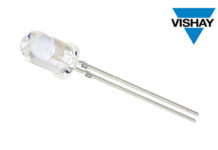
MOSFET (Metal Oxide Semiconductor Field Effect Transistor) or IGFET (Insulated gate field-effect transistor) is a four-terminal semiconductor device in which the current flow is controlled by an applied vertical electric field. These four terminals are denoted as the source, gate, drain and substrate.
In many electronic applications, the MOSFETs have replaced the bipolar junction transistors because of their simple structure and low cost.
The N-channel MOSFET (NMOS), P-channel MOSFET (PMOS), Complementary MOSFET (CMOS) and the charge-coupled devices (CCD) have emerged as important semiconductor electronic devices.
Types Of MOSFETs
Based on the type of substrate, MOSFETs are classified into two categories:
- n-channel (p-type substrate)
- p-channel (n-type substrate)
Within each of the two classifications, the device may be of enhancement-mode (normally OFF) and of depletion-mode (normally ON). The n-channel device can be either enhancement or depletion type while the p-channel device is of the enhancement type.
The n-channel MOSFET is faster and has better high-frequency capacity than a p-channel device of the same geometry and dimensions. Therefore, an n-channel structure is preferred over a p-channel structure.
Comparison of P-Channel and N-Channel MOSFETS
P-Channel MOSFET
- It is made up of P-type material.
- It turns on when you apply a negative voltage at its gate terminal.
- Have a low packing density leads to a large size.
- High ON resistance.
- Low switching speed. (Mobility of holes is low).
N-Channel MOSFET
- It is made up of N-type material.
- It turns on when you apply a positive voltage at its gate terminal.
- Low ON resistance.
- Have higher packing density, leads to a small size.
- High switching device. (Mobility of electron is high).

















